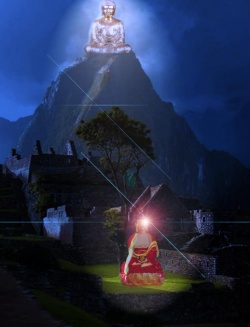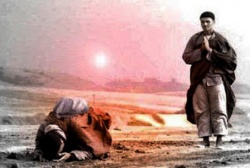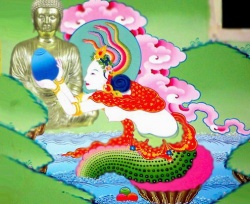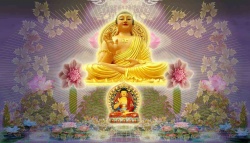We are now in a period called the Latter Day of the Law.
- We have heard that according to Buddhism, we are now in a time period called the 'Latter Day of the Law'.
But what does this mean in terms of our Buddhist practice?
The Latter Day of the Law, or mappo in Japanese, is the last of three time periods described in Buddhism.
These three periods, shoho (the Former Day of the Law), zoho (the Middle Day of the Law), and mappo (the Latter Day of the Law), were expounded by Sakyamuni Buddha to describe what would happen to the teaching of Buddhism after his passing.
The gist of this was that although the Buddha's teachings possessed the power to save the people from suffering and lead them to enlightenment, its power would gradually decline with the passage of time.
But, one might ask, are not the teachings of Buddhism absolute principles that shed light on the fundamental problems of existence, transcending life and death, time and society?
This is most definitely true; however, what changes with time is the capacity or nature of the people.
Sakyamuni taught that with time, the people's capacity to understand, practise and manifest the benefit of his teachings would decrease as their lives became more and more defiled by the 'three poisons' of greed, anger and ignorance, and society fell into a state of disorder.
Eventually, Sakyamuni taught, his teachings would be completely powerless to benefit people in such a condition, and that a teaching powerful enough to save the people would be expounded in their place.
Sho of shoho, the Former Day of the Law, means 'correct' and ho means law or teaching.
In other words, shoho indicates 'correct teaching' and is short for shoho-ji which means the 'period of the correct teaching'.
Sakyamuni taught that during the period following his death, the teachings of Buddhism would be correctly taught and carried out in practice, enabling people to obtain actual proof of benefit and eventual enlightenment.
These three elements, teaching, practice and proof, were all present in the Former Day of the Law.
During this period, the pure spirit of Sakyamuni and his teachings still pulsated among the people, although the Buddha himself had passed away.
During this time, Sakyamuni's disciples compiled and assembled his teachings, leaving them behind in the form of sutras, and the teachings, practice and proof of his Buddhism flourished.
During zoho, the Middle Day of the Law, Sakyamuni predicted that the teachings and practice of his ;
Buddhism would continue to exist, but the benefit I derived from them would become negligible.
Zo of zoho means image or likeness.
This was a name given not by Sakyamuni himself, but in retrospect, because during this period, images and statues of the Buddha abounded.
The practice of Buddhism fell mostly into formality and the people's capacity declined to a point where they could no longer reap benefit from the Buddha's teachings.
Finally, we come to mappo, the Latter Day of the Law.
Mappo translated literally means 'the end of the Law', and this signifies the period in which the teachings of Sakyamuni Buddha fell into complete decline.
Only the teachings themselves remained in the form of sutras, but their practice and any resulting benefit disappeared.
Actually, from a historical perspective, Sakyamuni's prophecies about the decline of his teachings over these three time periods apply most accurately to Hinayana (lesser vehicle) Buddhism, which prevailed in India and South-east Asia.
Mahayana (great vehicle) Buddhism, which spread to China and later to Japan, still yielded benefit in the Middle Day of the Law, and was still practised to some extent in the Latter Day.
Now, you may be curious as to when these time periods actually occurred.
By classical definition, the Former Day and Middle Day of the Law each lasted for one thousand years - the Former Day beginning immediately after Sakyamuni passed away and the Middle Day, one thousand years later.
The Latter Day of the Law is considered by most Buddhist scholars to have begun in the year 1052 and this was the view held by Nichiren Daishonin.
There is also an interpretation that places the Former and Middle Days of the Law at 500 years each in duration.
Whichever the case, we are now definitely in the midst of the Latter Day of the Law.
And. just as Sakyamuni himself predicted, a true teaching has now appeared in the Latter Day which is powerful enough to save even people who are filled with the three poisons of greed, anger and ignorance.
This is the Buddhism of Nichiren Daishonin.



